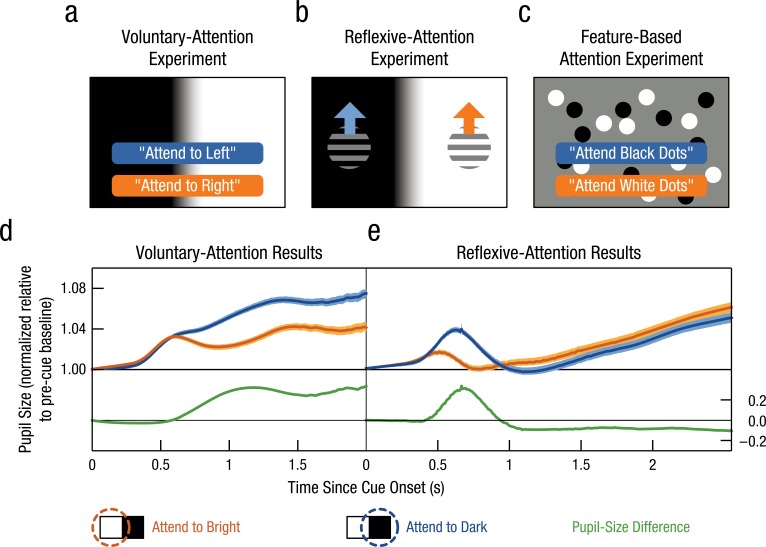Fig. 2.
The effect of covert visual attention on the pupillary light response. Panel (a) shows an example of a voluntary-attention experiment in which participants direct their attention to the left or right side of the screen based on an auditory cue (cf. Mathôt, van der Linden, Grainger, & Vitu, 2013). Panel (b) shows an example of a reflexive-attention experiment in which attention is drawn to the left or right by a sudden movement (cf. Mathôt, Dalmaijer, Grainger, & Van der Stigchel, 2014). Panel (c) shows an example of a feature-based-attention experiment in which participants attend to one of two intermingled sets of dots (cf. Binda et al., 2014b). The pupil is larger when attention is voluntarily directed at a dark (blue), relative to a bright (orange), surface (d; Mathôt et al., 2013). After a reflexive shift of attention, the pattern is initially similar (i.e., a larger pupil when attending to a dark surface) but inverses after about 1 second, corresponding to inhibition of return (e; Mathôt et al., 2014). Error bands correspond to 95% confidence intervals.

